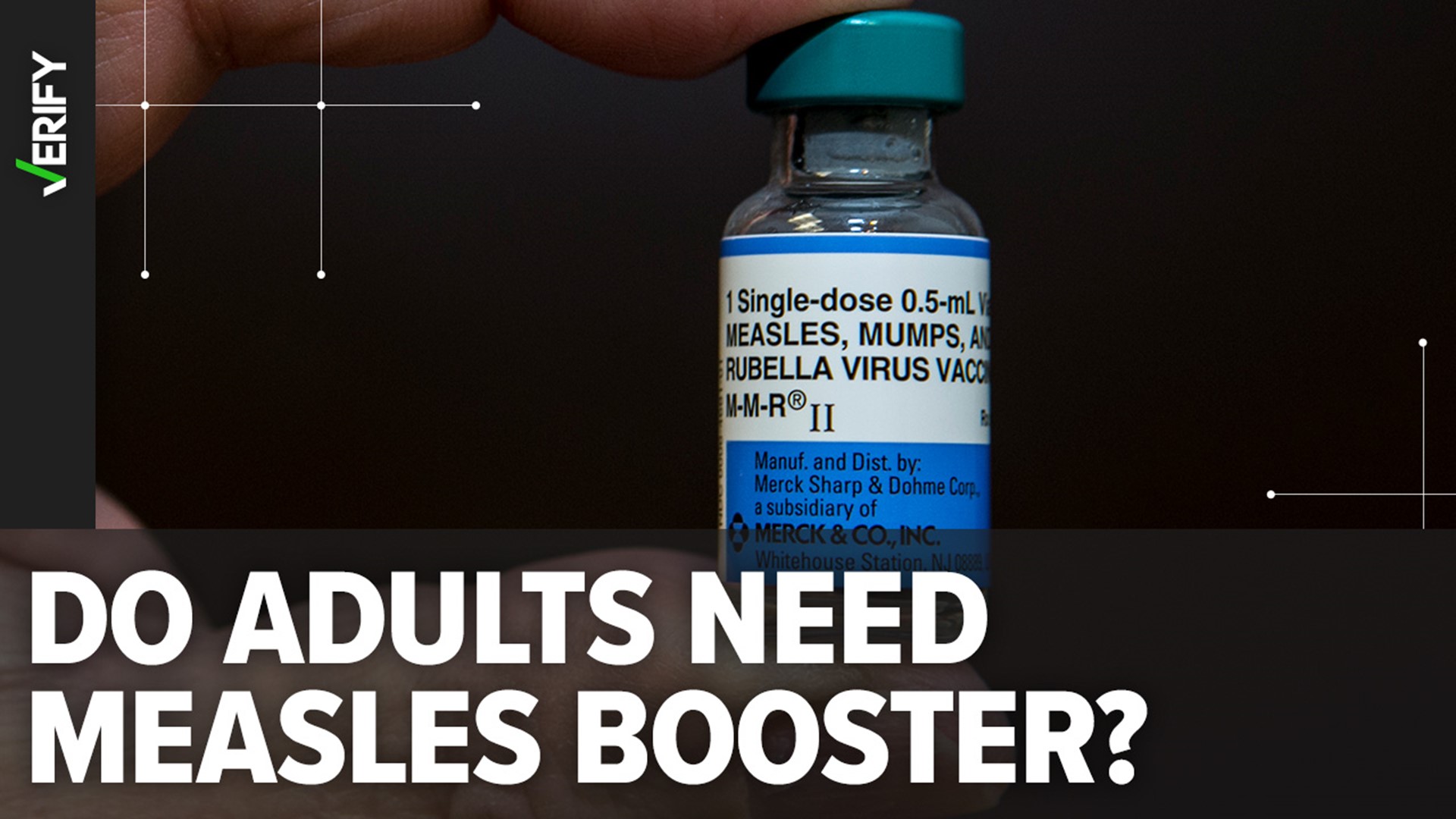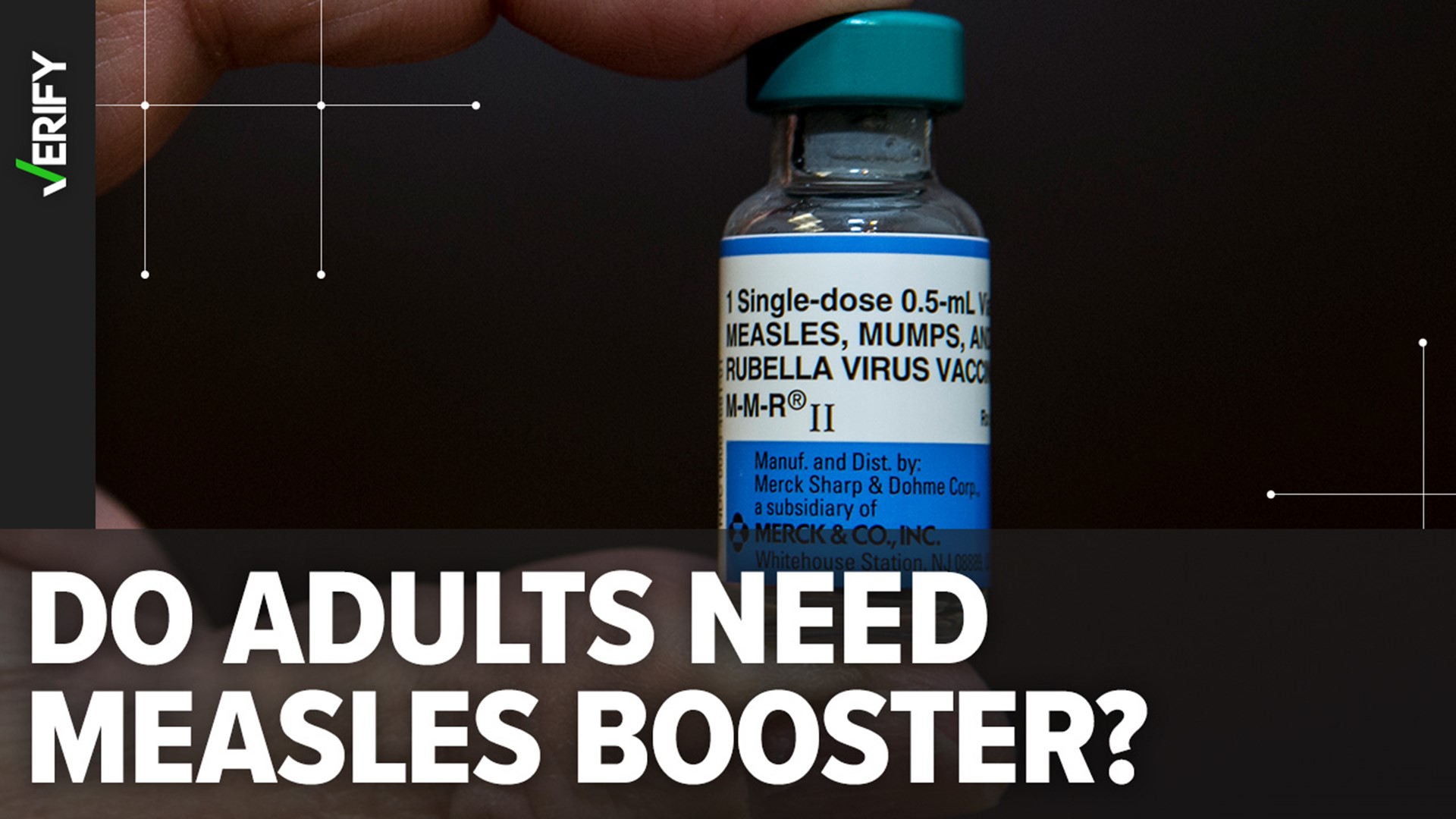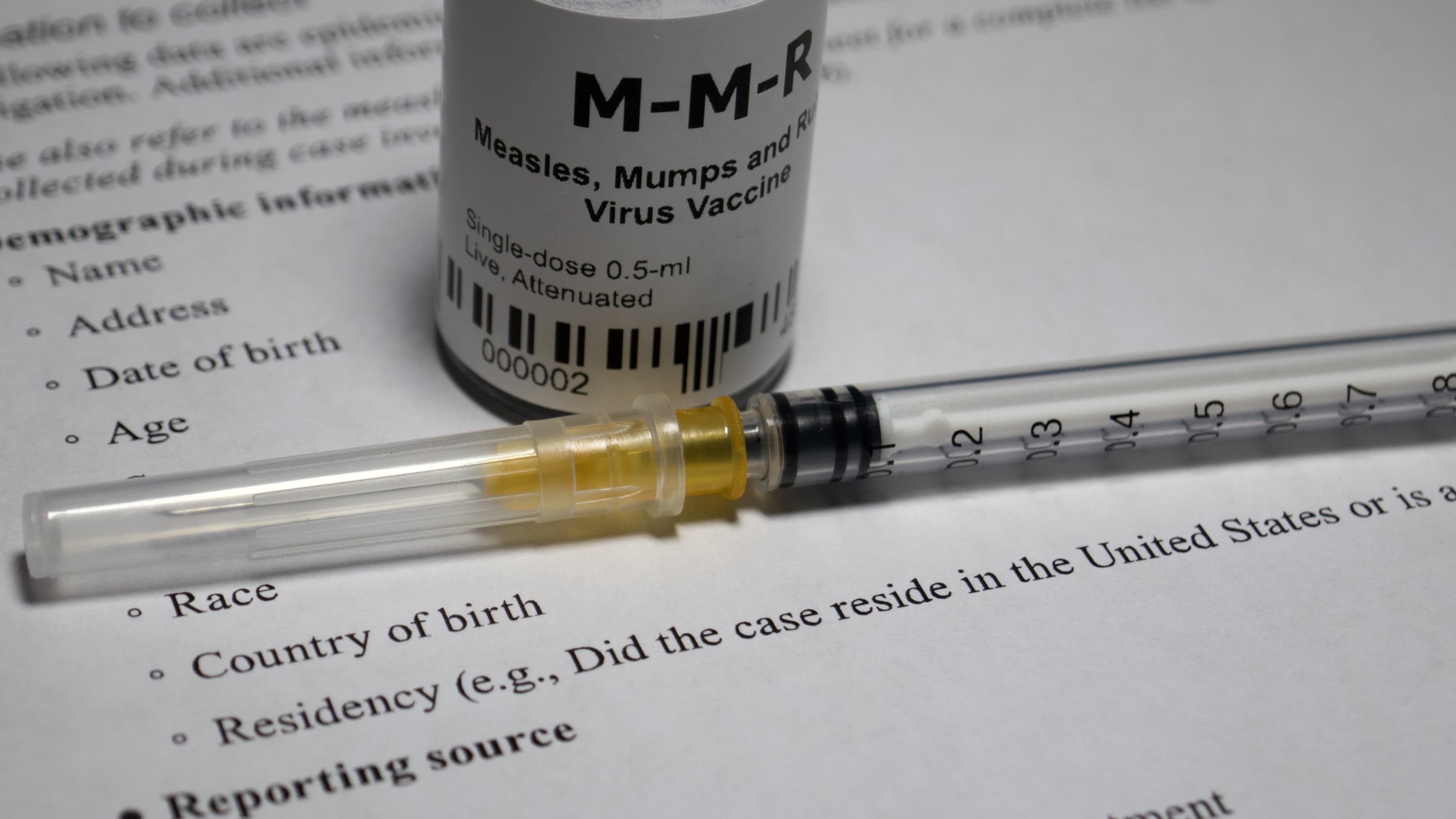Do i need a measles booster-various-aspects-
These days, most individuals receive vaccinations against measles, a highly infectious, life-threatening respiratory virus, during their childhood. However, recent news that measles is on the rise in certain areas of the United States is causing some adults to question if they require a measles booster shot.
At the start of April, a total of 607 confirmed measles cases had been documented this year across 22 jurisdictions in the U. S. , spanning from New York City to Alaska, with 93% of these cases linked to outbreaks (defined as three or more cases), based on information from the Centers for Disease Control and Prevention (CDC). As of early April, nearly 500 of those cases were confirmed in Texas, where the majority of infections have involved children.


For context, the national number for 2025 has already surpassed the 285 cases the agency recorded throughout 2024. In 97% of this year’s cases, individuals who were infected were either unvaccinated or their vaccination status was not confirmed.
Two school-aged children have succumbed to the disease in West Texas, a region that has seen an increase in cases, one in February and another in April. In the nearby state of New Mexico, one death was reported in an adult who tested positive for measles (the official cause of death in that instance is pending confirmation). All three cases were linked to individuals who were unvaccinated.
The two fatalities in Texas marked the first measles deaths in the U. S. since 2015. The outbreak in Texas is among several occurring in the country thus far this year. Additional outbreaks have been noted in Kansas, Ohio, Oklahoma, and New Mexico.
While the CDC indicates that the risk for widespread measles in the United States remains low, it also issued an advisory following these deaths, stating that all Americans should stay current on their measles, mumps, and rubella (MMR) vaccine. The vaccine is the most crucial measure for preventing a measles infection, asserts the advisory.
Measles was officially declared “eliminated” in the U. S. in 2000, although sporadic cases were reported in subsequent years, typically involving individuals who had traveled abroad and contracted the virus. Outbreaks have become more commonplace in recent years. In 2024, there were 16 documented measles outbreaks in the U. S. , accounting for 69% of cases, according to the CDC.
“The issue with measles is its extreme contagiousness. It’s one of the most contagious diseases known,” states Scott Roberts, MD, a Yale Medicine infectious diseases expert, emphasizing that a person’s geographical risk can shift rapidly.
If any patient of ENT requires any surgery, opd consultation or online consultation in clinic of ENT specialist Doctor Dr Sagar Rajkuwar ,he may contact him at the following address-
Prabha ENT clinic, plot no 345,Saigram colony, opposite Indoline furniture Ambad link road, Ambad ,1 km from Pathardi phata Nashik ,422010, Maharashtra, India-Dr Sagar Rajkuwar (MS-ENT), Cell no- 7387590194 , 9892596635
Issued in public interest by –
Discussed three essential points everyone should recognize about measles and measles vaccination.
1. Measles is a highly transmissible disease.
Measles begins with a cough, fever, runny nose, and conjunctivitis (pink eye), appearing seven to 14 days post-infection. Three to five days after the onset of symptoms, the characteristic red measles rash develops, starting on the face and spreading down the body.
In the most severe instances, the illness can result in significant complications like deafness, pneumonia, encephalitis (brain inflammation), and even death. Young children under 5, individuals with compromised immune systems, and pregnant women are particularly susceptible to severe cases.
“Measles can weaken the immune system and increase susceptibility to infections from additional viruses and bacteria,”. “It can also result in keratitis (corneal inflammation), which may result in blindness. ”
If you recover from measles, you are also at an elevated risk for subacute sclerosing panencephalitis (SSPE), an untreatable degenerative condition affecting the brain and nervous system that manifests symptoms such as depression, involuntary movements, and dementia.
Measles is extremely infectious—it’s more easily transmitted than the flu or COVID-19. The basic reproductive number (termed the R0, pronounced “R naught”)—a measure to indicate the transmissibility of an infectious agent—is between 12 and 18 for measles. This implies that an infected individual is likely to transmit the infection to 12 to 18 people who lack immunity to the virus, he notes.
The virus can be transmitted to others at any time from four days prior to four days following the emergence of the measles rash. This transmission can occur after an infected person coughs or sneezes, when others inhale the contaminated air or touch an infected surface, and then touch their eyes, nose, or mouth. The virus can survive on a surface or remain airborne for up to two hours.
Measles typically spreads when individuals residing in an area experiencing an outbreak travel to regions with low rates of measles vaccination—areas where individuals are particularly at risk.
However, “locations with a significant proportion of vaccinated individuals possess herd immunity, making it difficult for measles to escalate into an outbreak in those areas,” he states. (Herd immunity is attained when a considerable majority of a population is immune to a particular disease, whether through vaccination or past infection. )
“The measles vaccine represents an extraordinary success narrative and highlights the effectiveness of vaccination in eradicating such a contagious illness,”
2. The measles vaccine is both safe and highly effective.
Along with measles, the MMR vaccine shields against mumps and rubella. Mumps is marked by painful inflammation in the salivary glands, resulting in swollen cheeks and a puffed-up jaw. Rubella, also known as German measles, brings about a mild rash and fever; however, if a pregnant woman contracts it, it can lead to birth defects in her fetus.
The majority of individuals receive the MMR vaccine during childhood. It is administered in two doses, the first usually when a child is 12 to 15 months old, and the second when they are between 4 and 6 years old. It is a live vaccine, which means it includes a small, weakened quantity of the virus. This prepares a healthy immune system to identify the measles, mumps, or rubella viruses if they attempt to invade the body, and combat them, preventing an infection from occurring.
No vaccine offers 100% effectiveness against measles, yet two MMR doses are 97% effective. (Two doses offer 88% effectiveness against mumps, while a single dose is 97% effective against rubella. ) The vast majority of vaccinated individuals will never contract measles; although a minor percentage experience “breakthrough” cases, the symptoms are typically mild.
The MMR vaccine is deemed safe, according to the CDC, which points out that most individuals experience no side effects. If side effects arise, the most common include tenderness at the injection site, fever, and discomfort or stiffness in the joints. Some individuals may develop a mild rash within three weeks after vaccination, but this is not a cause for concern unless they have also had a known or suspected exposure to measles, as per the CDC.
For update on further important health related topics and frequently asked questions on health topics by general population please click on the link given below to join our WhatsApp group –
https://chat.whatsapp.com/Lv3NbcguOBS5ow6X9DpMMA
Issued in public interest by –
3. Most individuals won’t require a booster, but it is advisable to verify your vaccination status.
The positive news is that the majority of people have immunity to measles either through vaccination or prior infection. The two MMR doses given to children are regarded as full immunization for life, with no further vaccinations necessary.
Individuals born prior to 1957 are seen as having “presumptive evidence” of immunity, as nearly everyone born during this era contracted the disease in childhood. However, healthcare professionals born before 1957 who lack proof of immunity should consider receiving the vaccine.
Children, teenagers, and adults born after 1957 should receive at least one MMR vaccination if they have never contracted measles or have not been immunized against the disease (or are uncertain of their vaccination status)—specifically, if they lack written documentation or other proof of immunity, as stated by the CDC. Among these people, some groups need to receive two MMR vaccines spaced at least 28 days apart; this category includes individuals at high risk for exposure, such as students attending post-secondary institutions, health-care professionals, international travelers, and women of childbearing age prior to becoming pregnant.
Individuals aged 6 months and older should be vaccinated if they are located in an area experiencing an outbreak. If they will be traveling internationally, the CDC recommends ensuring they are fully vaccinated before departure, irrespective of their destination.
Another population that might be at risk is adults vaccinated between 1963, when the initial measles vaccine received approval, and 1967. During this timeframe, some children were administered an inactivated (killed) measles vaccine, which was less effective than the live vaccine. If you are aware that you received the inactivated vaccine instead of the live version, or if you are uncertain, you should receive at least one dosage of the live MMR vaccine, according to the CDC. The CDC offers additional guidance on determining how many MMR doses you might require—if you are still uncertain, it is advisable to consult your physician.
There are several methods to verify your vaccination status, including written records or database entries. If you lack documentation from your childhood pediatrician, your state might maintain an Immunization Information System (IIS). The CDC offers further details on how to find vaccination records on its website.
Alternatively, discuss the option of having an MMR immunity blood test with your healthcare provider, which can indicate whether you possess antibodies against measles.
If you conclude that you require a measles vaccination, consult your physician to confirm your eligibility for vaccination. “Since the MMR vaccine is a live vaccine, certain individuals cannot receive it safely,” .
Individuals who might not qualify for the vaccine include those with compromised immune systems and those who have undergone an organ transplant or are presently receiving specific medical treatments such as chemotherapy, radiation, and immunotherapy. The vaccine generally is not administered to children under 1 year of age, although it may be offered to children as young as 6 months if they are traveling internationally or are located in an outbreak area. (For a comprehensive list of individuals who should avoid the measles vaccine, refer to the CDC website. )
If you think you might have been in contact with someone who has measles, contact your doctor right away so they can formulate a plan to ascertain your immunity, assess your condition, and advise you on the next steps. If you do contract the illness and your symptoms are not severe enough to require hospitalization, you should remain at home and isolate yourself for four days to prevent spreading the virus to others, as stated by the CDC.
There is no targeted antiviral treatment for measles, but medical assistance can help alleviate symptoms and manage complications.
Issued in public interest by –





